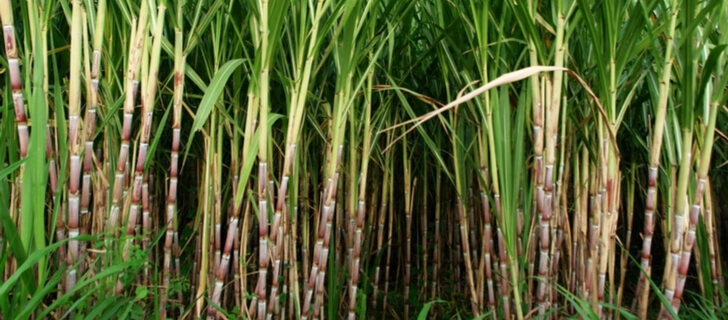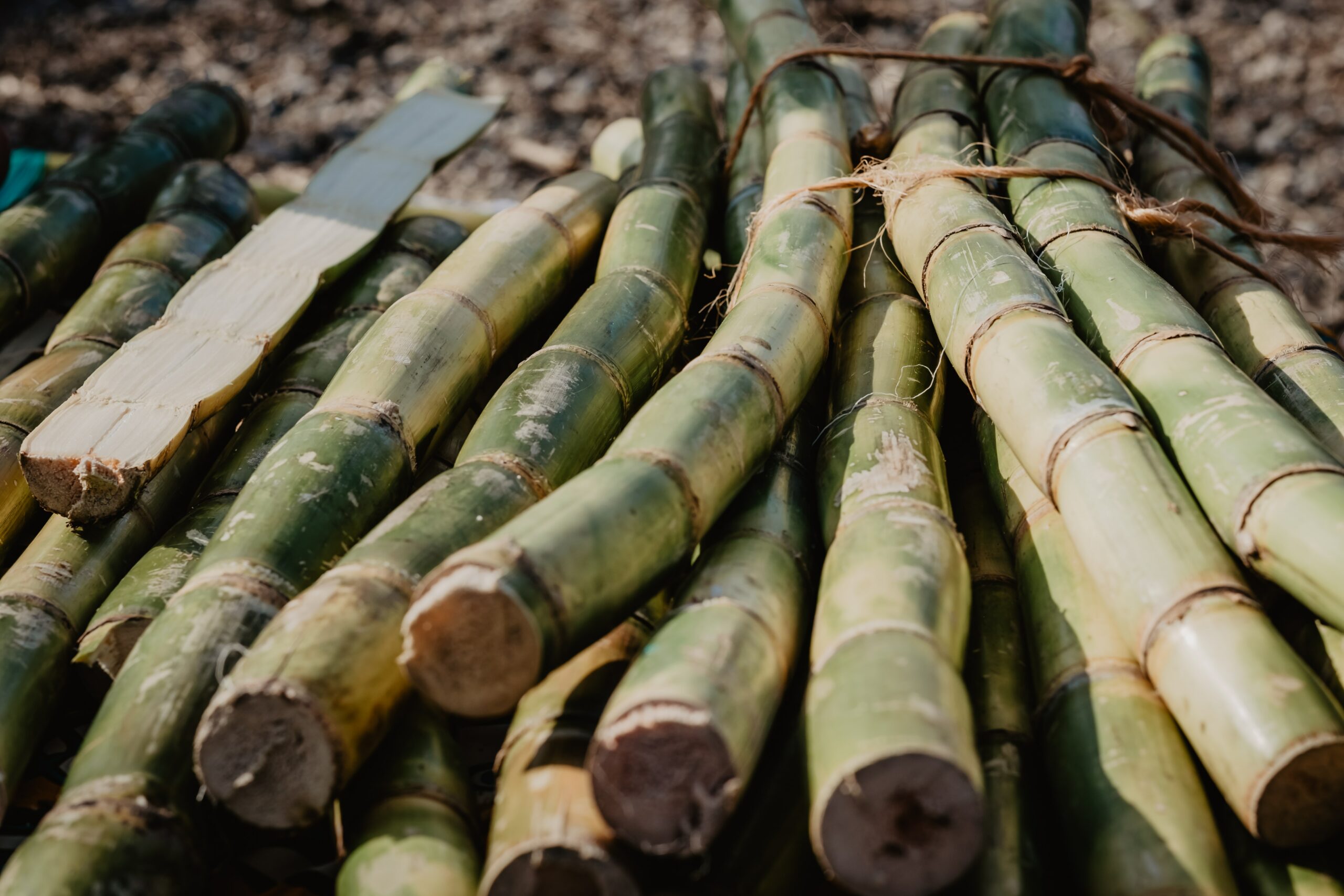Everything About Sugar Canes: What Are Sugar Canes Utilized For and Their Function in Global Farming?
Sugar canes work as a cornerstone of international agriculture, primarily recognized for their function in sugar manufacturing. They also contribute to the creation of by-products like molasses and ethanol. These elements not only sustain various sectors yet likewise effect economic security in country areas. The growing of sugar walking canes deals with substantial ecological obstacles. Recognizing their complex role triggers more expedition right into their agricultural techniques and sustainability efforts.
The Agricultural Process of Sugar Walking Cane Cultivation
Sugar walking cane cultivation may differ by region, the essential farming procedure remains constant. The primary step entails picking high-yielding varieties appropriate for regional climates. Preparation of the dirt is crucial, often needing tillage and the addition of plant foods to improve fertility. Growing generally happens throughout the wet period, with farmers making use of either entire stalks or cuttings to develop brand-new crops.As the plants expand, they require diligent care, including weed control, insect administration, and watering, depending upon the ecological problems. Farmers monitor the sugar cane's development cycle, which typically spans 10 to 24 months, before harvesting. Harvesting is labor-intensive, commonly performed by hand or with specialized machinery, making sure minimal damage to the stalks. Adhering to harvest, the walking cane is moved to processing centers. This thorough farming process not only supports neighborhood economies yet also plays a significant duty in global agricultural methods, contributing to food and power materials.
Sugar Production: From Cane to Crystal
The journey of sugar manufacturing starts the moment freshly harvested sugar walking cane gets to processing centers. The very first step involves cleaning and slicing the walking stick to prepare it for extraction. Utilizing high-pressure rollers, the juice is extracted from the crushed walking cane, leading to a sweet fluid understood as sugarcane juice. This juice undertakes clarification, where contaminations are removed via the addition of lime and heat.Next, the made clear juice is focused by boiling it to create a thick syrup. This syrup is after that crystallized by cooling down, enabling sugar crystals to form. The taken shape sugar is separated from the staying syrup, referred to as molasses, with centrifugation.Finally, the sugar crystals are cleaned and dried out, leading to the acquainted granulated sugar (What Are Sugar Canes Used For). This procedure changes raw sugar cane right into a product that is indispensable to different cooking and industrial applications, highlighting the significance of sugar in international agriculture
Biofuels and Sugar Canes: A Lasting Future
As the globe progressively looks for sustainable energy options, sugar walking sticks have actually become an appealing resource for biofuels. The biomass stemmed from sugar canes can be converted into ethanol, an eco-friendly fuel option that significantly decreases greenhouse gas emissions compared to fossil gas. This procedure not just gives a cleaner energy resource but additionally promotes energy independence for many countries.In enhancement, sugar walking stick cultivation sustains rural economies by creating tasks in both farming and biofuel production sectors. Using sugar walking sticks for biofuel manufacturing likewise encourages farming diversity, which can improve dirt health and minimize dependence on single crops. The spin-offs of sugar cane handling can be made use of for power generation, additionally contributing to a lasting power cycle. As countries endeavor to satisfy renewable resource targets, sugar walking sticks are poised to play an important role in shaping an extra lasting future in the biofuel landscape.

The Function of Sugar Canes in Beverage Manufacturing
Sugar walking canes play a considerable duty in drink production, functioning as a primary active ingredient in rum and contributing to the sweetness of many soft drinks. In addition, their natural juices are utilized in numerous beverages, enhancing flavor and allure. This convenience highlights the value of sugar walking sticks in the global drink market.
Sugar Cane in Rum
Rum production is intricately connected to the growing of sugar cane, a vital crop that supplies the required fermentable sugars required for fermentation. This process starts with the removal of juice from harvested sugar walking sticks, which is then either fermented straight or refined into molasses. Yeast is contributed to convert the sugars right into alcohol, causing a diverse variety of rum designs, from light to dark varieties. The geographical area where the sugar cane is expanded substantially affects the taste profile of the rum, with factors such as dirt type and environment playing important functions. Countries like Barbados, Jamaica, and Cuba are renowned for their rum manufacturing, mirroring the cultural and historic value of sugar cane within the worldwide beverage industry.
Soft Drinks Sugar Source

All-natural Juice Production Uses
Along with its significant role in soda manufacturing, sugar walking cane is likewise critical in the natural juice industry. The juice removed from sugar walking cane, called walking cane juice, is commemorated for its natural sweet taste and special flavor profile. This juice is commonly eaten fresh in various regions, especially in tropical countries, where it is taken pleasure in as a renewing beverage. Furthermore, walking cane juice serves as a base active ingredient in a series of natural fruit juices and shakes, enhancing both taste and dietary value. Its all-natural homes make it an attractive option to sweetening agents, interesting health-conscious consumers. Overall, sugar walking cane's flexibility in juice production emphasizes its significance in modern beverage offerings worldwide.
Innovations in Sugar Walking Cane Byproducts
Advancements in sugar cane by-products are leading the way for lasting services in numerous industries. Biofuels originated from sugar cane use an alternative energy resource, while advancements in lasting packaging are minimizing reliance on typical materials. These advancements highlight the versatility and capacity of sugar cane beyond its key use in beverage production.
Biofuels From Sugar Walking Cane
How can the by-products of sugar walking cane contribute to click here for more info sustainable energy remedies? The conversion of sugar cane into biofuels provides an encouraging method for renewable energy. By making use of the fibrous deposit, recognized as bagasse, producers can produce bioethanol via fermentation procedures. This bioethanol can function as a lasting option to fossil gas, decreasing greenhouse gas discharges and dependence on non-renewable sources. Additionally, molasses, one more byproduct, can be fermented to generate biofuels, making best use of resource performance. The energy produced from sugar walking cane not just offers a cleaner gas resource but also enhances the overall financial viability of sugar production. By you can check here incorporating biofuel production into their procedures, sugar cane sectors can play a crucial function beforehand lasting energy options internationally.
Lasting Product Packaging Solutions
Lasting packaging remedies are significantly being established from sugar walking stick byproducts, showcasing the adaptability of this agricultural staple. Developments such as eco-friendly plastics originated from bagasse, the coarse residue left after juice removal, are obtaining traction. These materials use a green alternative to conventional plastics, minimizing dependence on nonrenewable fuel sources and lowering carbon impacts. Furthermore, sugar cane-based packaging is compostable, damaging down naturally without damaging the atmosphere. Companies are currently checking out these options to straighten with consumer need for sustainability. As understanding of plastic contamination grows, the fostering of sugar cane-derived packaging is anticipated to rise, placing sugar walking sticks as a principal in the shift to greener product packaging services in various sectors.
Economic Effect of Sugar Cane Farming

Sugar walking cane farming has deep roots in lots of economies, its economic effect expands far beyond farming manufacturing. This plant serves as a substantial source of revenue for millions of farmers worldwide, especially in establishing countries where farming is a primary source of income. Sugar walking cane contributes to neighborhood economic climates with job development in cultivation, processing, and harvesting. The market likewise promotes development in relevant sectors such as transportation, equipment manufacturing, and food processing.Furthermore, sugar walking stick is he has a good point a crucial gamer in worldwide profession, influencing global markets and prices. Nations that generate sugar walking cane typically count on exports to improve their financial security. The byproducts of sugar walking cane, such as ethanol and molasses, expand profits streams for farmers and include worth to the agricultural industry. Generally, the financial implications of sugar walking stick farming are extensive, influencing not just farmers however likewise entire communities and nationwide economies.
Environmental Considerations in Sugar Cane Farming
While sugar walking cane farming plays a necessary function in numerous economic climates, it also elevates considerable environmental worries that can not be neglected. The comprehensive usage of fertilizers and chemicals in sugar walking cane growing frequently leads to soil deterioration and water air pollution. Drainage from these chemicals can infect nearby water bodies, hurting aquatic ecological communities. Furthermore, the monoculture practices widespread in sugar cane farming reduce biodiversity, making communities much more prone to bugs and diseases.Deforestation is another vital problem, as land is typically cleared to make means for sugar plantations, causing habitat loss for wild animals and increased carbon exhausts. The high water intake needed for sugar walking cane watering can strain local water resources, especially in arid areas. As worldwide need for sugar remains to climb, dealing with these environmental difficulties ends up being important to ensure lasting practices in sugar cane growing.
Often Asked Concerns
What Are the Nutritional Perks of Sugar Walking Cane?
The dietary advantages of sugar walking cane primarily include its high carb material, giving power. Furthermore, it consists of vitamins, minerals, and anti-oxidants that may support general health and wellness, though small amounts is essential due to its sugar web content.
Just How Does Sugar Walking Stick Affect Resident Ecosystems?
Sugar cane farming can greatly influence regional environments by changing land usage, impacting biodiversity, and needing considerable water resources. Additionally, it might lead to dirt degradation and pesticide drainage, interrupting surrounding environments and wildlife populations.
What Is the Background of Sugar Cane Farming?

Exist Alternatives to Sugar Cane for Sugar Production?
Alternatives to sugar walking stick for sugar manufacturing consist of sugar beetroots, corn, and numerous tropical plants like sorghum and agave (What Are Sugar Canes Used For). These crops provide diverse sources of sweet taste, each with distinctive cultivation needs and environmental impacts
How Do Climate Patterns Influence Sugar Walking Cane Yields?
Climate patterns considerably affect sugar walking stick yields with temperature level changes, rains amounts, and seasonal cycles. Drought or excessive rains can prevent growth, while excellent problems improve photosynthesis, ultimately affecting the amount and top quality of the harvest. The trip of sugar production begins the moment fresh gathered sugar walking cane shows up at processing facilities. The taken shape sugar is divided from the staying syrup, understood as molasses, through centrifugation.Finally, the sugar crystals are cleaned and dried out, resulting in the acquainted granulated sugar. Rum production is intricately linked to the cultivation of sugar cane, an essential crop that supplies the necessary fermentable sugars needed for fermentation. Furthermore, the monoculture practices common in sugar cane farming lower biodiversity, making ecosystems much more susceptible to bugs and diseases.Deforestation is an additional important problem, as land is frequently gotten rid of to make method for sugar vineyards, leading to environment loss for wildlife and boosted carbon exhausts. Alternatives to sugar cane for sugar production consist of sugar beetroots, corn, and numerous tropical plants like sorghum and agave.